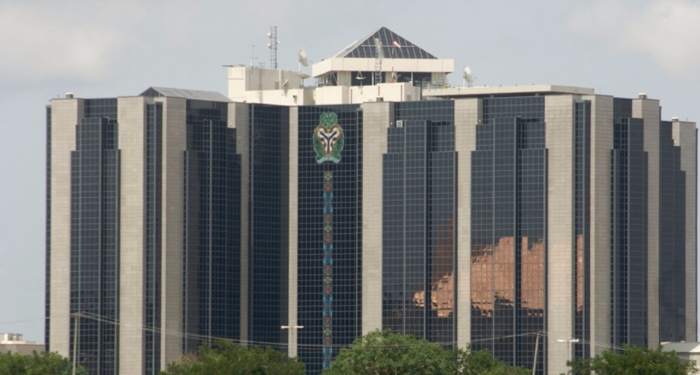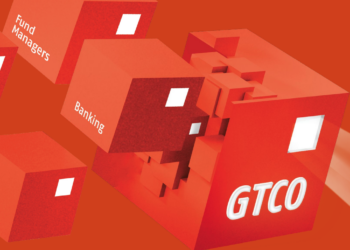Banks’ deposit placements with the Central Bank of Nigeria (CBN) rose steadily last week from N2.28 trillion on Wednesday to N2.55 trillion on Thursday before hitting N2.62 trillion at the close of business on Friday, October 24.
Lenders deposit excess cash at CBN’s Standing Deposit Facility (SDF), which the apex bank lends out to any banks through its Standing Lending Facility (SLF) window to meet critical overnight obligations with an Overnight interest rate as high as 24.8% as of last Friday, according to FMDQ.
Nairametrics’ analysis of CBN’s financial data during the week under review showed that deposit money banks (DMBs) deposited more cash with the CBN than they borrowed.
The opening balances of banks and discount houses (which reflect the amount of liquid cash the lenders reserved for banking transactions) jumped to N637.59 billion on Friday, October 24, 2025, from N522.09 billion the previous day as market liquidity soared through the week.
The massive improvement contrasted sharply with mid-week pressures that saw balances plunge to N192.65 billion on Wednesday. Dealers explained that while cash conditions improved, lending appetite in the interbank market remained subdued due to elevated benchmark rates.
A similar pattern played out earlier in the week. On Tuesday, October 21, SDF placements ballooned to N1.75 trillion from N906.09 billion the previous business day. Analysts pointed to high credit risk concerns and a preference for the safety of the regulator window rather than lending into the real sector.
“With high benchmark rates for lending and borrowing, and concerns about credit risk and economic uncertainty, banks may prefer the relative safety of the SDF. It offers them a known return rather than extending credit into uncertain territory,” said Mr. Blakey Ijezie, the founder of Okwudili Ijezie & Co, a firm of chartered accountants.
CBN lending support moderates as liquidity pressures ease
While banks eagerly placed excess funds with the apex bank, borrowing from the CBN slowed as pressures in the interbank market relaxed. Standing Lending Facility (SLF) requests settled at N137.10 billion only on Friday after surging to N275 billion on Wednesday. The drop signalled a recovery in liquidity conditions and a more comfortable cash stance heading into the final week of the month.
Earlier in the week, SLF demand remained relatively high at N235 billion on October 21, slightly easing from N260.50 billion the previous day.
That mixed behavior showed that although system liquidity was strengthening, some institutions still required overnight support to rebalance their books.
No repo or reverse-repo transactions were recorded throughout the week, indicating that the regulator did not need to deploy additional liquidity-management tools beyond its standing facilities.
OMO operations, government securities shape cash distribution
Liquidity movements during the review period were also driven by primary market interventions and OMO operations. The CBN returned to the market with N827 billion in OMO bill sales on October 21, after a no-sale session the previous day. The intervention remained markedly below the N2.12 trillion sold on October 17, signalling a softer sterilization posture.
Government securities issuance and repayment flows provided additional liquidity swings. On October 23, the market saw N391.59 billion in NTB and bond issuances, while redemptions of N378.00 billion the same day boosted system liquidity.
With no fresh issuance or repayments recorded on Friday, dealers said residual liquidity from Thursday’s flows helped fuel the strong cash environment.
Interest rate watchers believe sustained liquidity inflows could place mild downward pressure on interbank rates if the trend continues into the final week of October.
The previous week demonstrated a financial system flush with liquidity but still wrestling with confidence, leaving the Central Bank to keep balancing act between stability and credit expansion as year-end pressures draw near.
Key takeaways from the week’s financial system review:
- System liquidity surged sharply as banks’ Opening Balances climbed as high as N637.59 billion on October 24 from mid-week lows of N192.65 billion.
- Standing Deposit Facility (SDF) placements peaked at N2.62 trillion on Friday.
- Demand for the CBN’s Standing Lending Facility (SLF) moderated to N137.10 billion from N275 billion earlier in the week, signaling reduced funding pressure.
- The CBN conducted N827 billion in OMO sales on October 21, below the N2.12 trillion issued on October 17, suggesting a more moderate liquidity sterilization approach.
- Government securities redemptions of N378 billion and issuances of N391.59 billion contributed to improved market liquidity.
- Interbank market confidence remained cautious despite strong liquidity, influenced by elevated interest rates and credit risk concerns.
Analysts offer insight
Explaining the factors driving the cash glut, Prof. Chiwuike Uba recalled that total credit to the private sector stood at N75.8 trillion in August 2025, down from N76.12 trillion in June, and only slightly higher than N74.7 trillion a year earlier.
This stagnation, he said, suggests that banks are holding back on new lending despite having liquidity to spare. At the same time, banks’ borrowing from the CBN fell to about N2.9 trillion in August, a 28% drop compared to the previous year, which further reinforces that the banking system is awash with cash. Yet this liquidity has nowhere productive to go.
The CBN’s Credit Conditions Survey for the second quarter of 2025 adds more context: although banks reported that credit availability improved slightly, loan demand remained weak and default risks continued to rise.
The analyst said that the sharp surge in Nigerian banks’ Standing Deposit Facility (SDF) placements with the CBN, therefore, is more than a fleeting statistic.
“It captures a deeper tension between liquidity abundance and lending reluctance in the financial system. Beneath the numbers lies a complex web of caution, policy tightening, and an economy grappling with uncertainty. Banks are not acting irrationally. They are responding to signals from an environment marked by high inflation, exchange rate volatility, and weak consumer confidence,” said Prof. Chiwuike Uba, a development economist, governance and public financial management (PFM) specialist.
He told Nairametrics that CBN’s aggressive monetary tightening, with the Monetary Policy Rate (MPR) held at 27%, has made the SDF rate of about 25.75% particularly attractive. “Faced with this reality, banks prefer to earn nearly risk-free returns by placing funds with the CBN rather than extending credit to businesses struggling under heavy input costs and uncertain demand,” said the economist.
Final word
While pointing at FAAC disbursement of about N2.10 trillion (from federal, state, local accounts) as well as injections from maturities of treasury bills or open‐market operations as a major contributing factor to the system liquidity glut, Ijezie raised a red flag.
He said, “In my view, this sharp increase in deposits in SDF placements is a double-edged sign for the economy. On one hand, strong liquidity means banks are well-funded. On the other hand, when such funds are not flowing into productive lending, it raises concerns about economic dynamism,” the chartered accountant and former employee of PwC stated.
Reading the scenario from a policy perspective, Prof. Uba said, “The CBN is also using the SDF as a liquidity sterilization tool. By encouraging banks to deposit excess funds, the apex bank helps mop up liquidity, contain inflation, and reduce volatility in the foreign exchange market.”

















